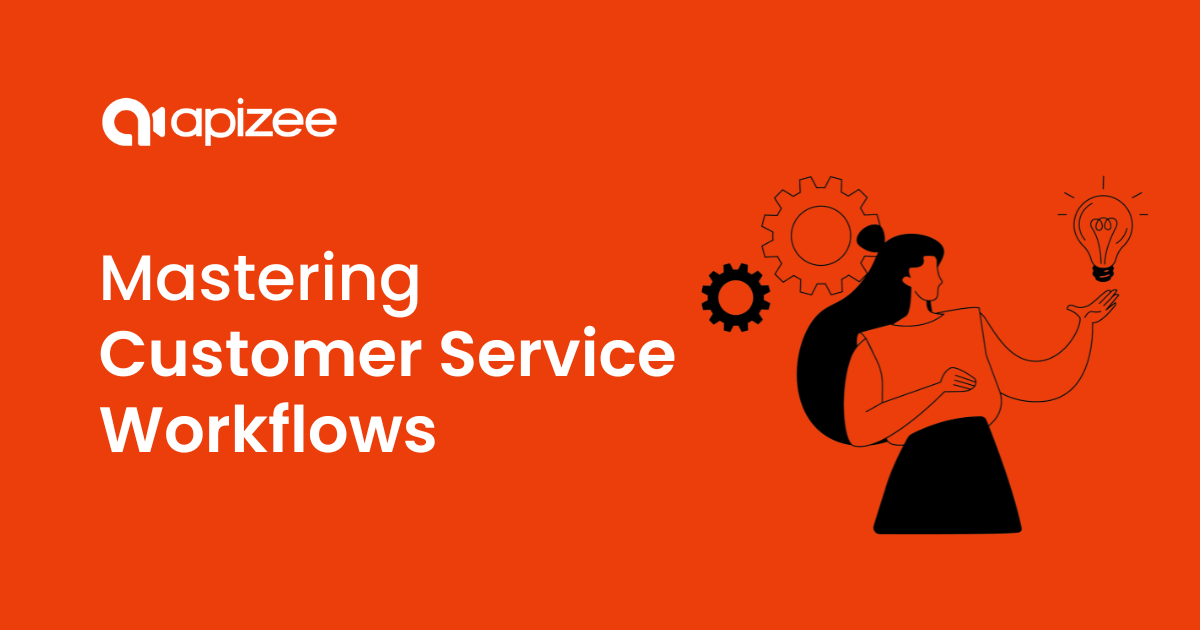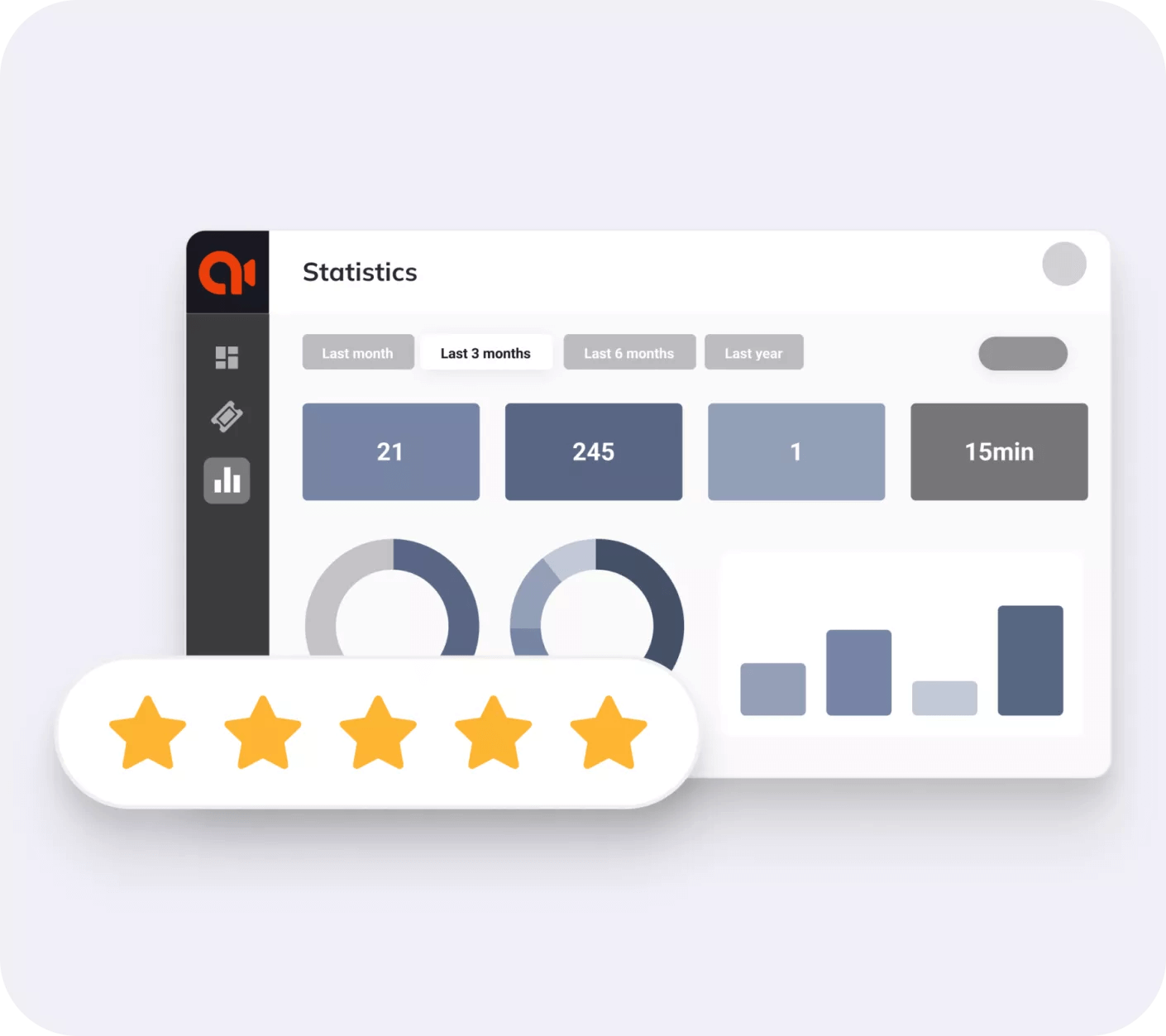The Ultimate Guide to Customer Service Workflows



In today’s world of increased customer expectations, delivering exceptional customer service isn’t just a nice-to-have; it’s a necessity. More than half of consumers will switch to a competitor after only one bad experience. Whether you’re a small startup or a large enterprise, the key to providing consistent, efficient, and high-quality support lies in well-defined customer service workflows. But what exactly are customer service workflows, and how can they transform your business operations?
This comprehensive guide will take you through everything you need to know about customer service workflows, from understanding their importance to optimizing them for maximum efficiency. Whether you’re looking to streamline your support processes, improve customer satisfaction, or simply learn more about best practices, you’ll find valuable insights and actionable tips here.
So, if you’re ready to elevate your customer service to the next level, let’s dive in and explore the world of customer service workflows.
Customer service workflows are the structured, step-by-step processes that guide how customer service teams handle various types of customer interactions. These workflows outline the specific actions to take at each stage of a customer interaction, ensuring that every query, complaint, or request is managed efficiently and consistently.
At their core, customer service workflows are designed to streamline operations, reduce response times, and enhance the overall customer experience. By defining clear procedures for common scenarios—such as answering inquiries, processing returns, or troubleshooting technical issues—workflows help customer service representatives handle tasks more effectively and with fewer errors.
The importance of customer service workflows cannot be overstated. In an era where customer expectations are at an all-time high, having a well-defined workflow can be the difference between retaining a loyal customer and losing them to a competitor. Workflows ensure that your team delivers consistent service, regardless of who is handling the interaction. This consistency not only boosts customer satisfaction but also helps in building trust and loyalty.
Furthermore, customer service workflows allow for better use of resources. By automating routine tasks and providing clear guidelines for complex issues, workflows free up your team to focus on high-priority cases that require more attention. This leads to improved efficiency, lower operational costs, and a better ability to scale your support operations as your business grows.
In summary, customer service workflows are essential for any business looking to deliver high-quality, reliable support. They provide a framework that helps your team meet customer needs quickly and effectively, contributing to both customer satisfaction and business success.
Customer service workflows can vary greatly depending on the nature of your business, the complexity of your products or services, and the specific needs of your customers.
Companies focusing on customer experience (CX) can see substantial benefits, including a remarkable 80% increase in revenue. Customer service workflows are a key component in achieving such impressive results. These workflows are the structured, step-by-step processes that guide how customer service teams handle various types of customer interactions.
Below, we’ll explore some of the most common types of customer service workflow examples that are essential for delivering efficient and consistent support.
The new customer onboarding workflow guides your team through the process of welcoming and educating new customers. This may include account setup, product tutorials, and personalized support to ensure customers get the most out of your offerings right from the start.
Apizee pro tip :
This workflow outlines the steps for managing product returns or exchanges, from verifying the return eligibility to processing refunds or sending replacement items. A well-defined return/exchange process helps minimize customer frustration and ensures a smooth transaction.
Apizee pro tip :
When customers encounter technical issues, the technical support troubleshooting workflow provides a step-by-step guide for diagnosing and resolving problems. This workflow often includes detailed procedures for common issues, escalation paths for complex problems, and documentation of resolutions.
Apizee pro tip :
Handling customer inquiries related to account management and billing is crucial for maintaining customer satisfaction. This workflow includes steps for verifying customer information, reviewing billing details, resolving discrepancies, and making account adjustments as needed.
Apizee pro tip :
The complaint handling and resolution workflow ensures that customer complaints are addressed promptly and effectively. This process typically involves acknowledging the complaint, investigating the issue, providing a resolution, and following up to ensure customer satisfaction.
Apizee pro tip :
For businesses involved in product sales, the order tracking and status updates workflow helps customers stay informed about their orders. This workflow includes steps for providing tracking information, updating customers on order status, and resolving any issues related to delivery.
Apizee pro tip :
When customers seek information about products or services, the product information and sales support workflow guides agents in providing accurate and helpful responses. This workflow may also include steps for recommending complementary products and facilitating sales.
Apizee pro tip :
This workflow covers the process of scheduling, rescheduling, and managing customer appointments. It ensures that appointments are booked efficiently, reminders are sent, and any changes are communicated to both the customer and the service provider.
Apizee pro tip :
With the growing importance of social media, this workflow helps manage customer interactions on platforms like Facebook, X, and Instagram. It includes steps for monitoring mentions, responding to inquiries, and handling issues raised through social channels.
Collecting feedback and conducting surveys are essential for understanding customer satisfaction and identifying areas for improvement. This workflow outlines the process for designing surveys, distributing them to customers, collecting responses, and analyzing the results.
This workflow assists customers who need help resetting passwords or recovering access to their accounts. It includes identity verification steps, providing instructions for resetting passwords, and ensuring the customer regains access securely.
Apizee pro tip :
Managing customer subscriptions involves a workflow that handles requests for upgrades, downgrades, and cancellations. This process ensures that changes are made smoothly, billing is adjusted accordingly, and customers are informed of any impacts on their service.
Apizee pro tip :
When customers report lost or damaged items, this workflow guides the process of filing claims, verifying details, and providing replacements or refunds. It ensures that claims are processed efficiently and customers feel supported during the resolution.
Apizee pro tip :
For products under warranty, this workflow outlines the steps for processing warranty claims. It includes verifying the warranty status, assessing the issue, providing repair or replacement options, and ensuring the customer receives the necessary support.
Apizee pro tip :
This workflow focuses on identifying opportunities to offer additional products or services during customer interactions. It provides guidelines for when and how to suggest relevant upgrades or add-ons, enhancing the value provided to the customer.
Apizee pro tip :
Handling VIP or priority customers requires a specialized workflow that ensures these high-value clients receive expedited and personalized service. This workflow often includes direct access to senior support agents, faster response times, and tailored solutions.
Apizee pro tip :
In the event of a product recall, this workflow ensures that customers are informed quickly and provided with clear instructions on what actions to take. It includes steps for communicating recall details, offering replacements or refunds, and tracking the resolution.
Apizee pro tip :
Refund processing is a critical workflow for managing requests for refunds. This workflow includes verifying the eligibility of the refund, processing the payment, and ensuring the customer is kept informed throughout the process.
Apizee pro tip :
For businesses serving a diverse customer base, the multi-language support routing workflow ensures that customers are connected with agents who speak their preferred language. This workflow includes steps for identifying language preferences and routing the inquiry accordingly.
The shopping cart workflow manages the process of assisting customers who are having issues with their online shopping cart. This includes troubleshooting payment issues, providing product recommendations, and ensuring that the checkout process is completed smoothly.

To create effective customer service workflows, several key components must be carefully integrated into the design and execution of these processes. These components ensure that workflows are not only efficient but also capable of delivering a high-quality customer experience. Investing in a customer-first operation can yield up to a 700% ROI over 12 year according to Forrester.
Here are the essential elements that contribute to the success of customer service workflows:
Automation and artificial intelligence (AI) play a crucial role in enhancing customer service workflows by streamlining repetitive tasks and improving response times. Automated systems can handle routine inquiries, process transactions, and provide instant responses, freeing up customer service representatives to focus on more complex issues. AI-powered chatbots, for example, can offer 24/7 support, answer frequently asked questions, and escalate cases to human agents when necessary. By integrating automation and AI, businesses can ensure faster, more accurate service while reducing operational costs.
A centralized knowledge base is a repository of information that supports customer service representatives and customers alike. It contains detailed documentation, FAQs, troubleshooting guides, and best practices. A well-organized knowledge base allows agents to quickly access relevant information, leading to faster resolution of customer issues. For customers, a self-service knowledge base provides the ability to find answers and solutions on their own, enhancing their overall experience and reducing the need for direct support.
Omnichannel support involves providing a seamless customer experience across multiple channels, including phone, email, chat, social media, and more. Effective customer service workflows should integrate these various channels to ensure that customers receive consistent and cohesive support regardless of their preferred method of communication. Omnichannel support allows for smoother transitions between channels and provides a unified view of customer interactions, which helps in delivering personalized and efficient service.
Real-time monitoring and analytics are vital for tracking the performance of customer service workflows and identifying areas for improvement. By analyzing key metrics such as response times, resolution rates, and customer satisfaction scores, businesses can gain insights into the effectiveness of their workflows. Real-time data also enables customer service teams to make informed decisions, respond to emerging issues promptly, and continuously refine their processes to enhance overall service quality.
Defining clear roles and responsibilities within customer service workflows ensures that tasks are handled efficiently and by the appropriate team members. Each workflow should specify who is responsible for each stage of the process, from initial contact to final resolution. This clarity helps in avoiding confusion, reduces the risk of errors, and ensures that customers receive consistent and reliable support.
Collecting feedback from customers and service agents is essential for refining and improving customer service workflows. Regularly soliciting feedback helps identify pain points, uncover opportunities for enhancement, and ensure that workflows remain effective in meeting customer needs. Implementing a continuous improvement process allows businesses to adapt to changing customer expectations, incorporate new technologies, and address emerging challenges proactively.

Creating effective customer service workflow processing requires a strategic approach that not only maps out the steps involved but also addresses gaps in current processes and leverages key technologies.
Follow this comprehensive steps to build workflows that enhance efficiency, improve customer satisfaction, and optimize your service delivery:
Start by analyzing the types of customer interactions your business handles most frequently, such as inquiries, support requests, and complaints. Additionally, uncover any broken processes or service gaps that could hinder efficiency.
Ask yourself the following questions:
Once you've identified common interactions and process gaps, map out the workflow process for each type of customer interaction. This involves outlining the steps involved from start to finish, creating detailed flowcharts or diagrams. Tools like Miro can be useful for process mapping. Ensure you cover all scenarios, including edge cases.
Consider how processes flow from customer engagement through to resolution:
Select and integrate tools and technologies that support your workflows and enhance their efficiency. Ensure that the tools you choose, such as CCaaS, CRM systems, helpdesk software can handle the specific requirements of your workflows, including ticket management, automated responses, or multi-channel support. For instance, ServiceNow provides comprehensive solutions for automating tasks, managing incidents, and tracking performance.
It helps addressing several critical elements when selecting tools:
Effective workflows depend on well-trained team members. Provide comprehensive training to ensure your customer service team understands the workflows, tools, and technologies. Training should include:
After implementation, continuously monitor the performance of your workflows. Use real-time analytics and customer feedback to assess effectiveness. Key areas to evaluate include:
Apizee pro tip : discover 14 customer experience metrics you should be measuring, including how to calculate your own benchmarks and improve each.
To maximize the effectiveness of your customer service workflows, it is crucial to eliminate silos within your organization. Traditional models often isolate customer service from other departments, requiring reliance on emails, phone calls, or instant messages to seek assistance from other teams. This approach can lack traceability and accountability. Here’s how to break down these silos:

At every customer workflow can be solved by automation or self-care options, managing complex issues effectively requires advanced strategies and tools. The shift from asking customers to describe their problems ("Tell me what you see") to directly observing and interacting with them ("Show me what you see") highlights the growing need for enhanced visual support. Video calls have become a crucial tool in this transformation, particularly when combined with the role of the "super agent" — a highly trained specialist equipped to handle intricate issues.
The "super agent" is essential in managing complex workflows. These agents are distinguished by their:
Video calls are particularly beneficial for scenarios involving complex or visual issues. Here’s when to incorporate them into your workflows:
Integrating video calls into your support strategy offers several advantages:
Combining the expertise of a super agent with the real-time advantages of video calls creates a powerful synergy in managing complex customer service workflows. This winning combination not only guarantees exceptional customer satisfaction but also opens up valuable upsell opportunities.
Effective customer service workflows are crucial for delivering outstanding support and meeting the high expectations of today’s consumers. By understanding and implementing well-structured workflows, businesses can manage a range of customer interactions more efficiently. From new customer onboarding and technical support to handling complaints and processing returns, a well-designed workflow ensures that each customer interaction is handled smoothly and effectively.
With 80% of customers now saying the experience a company provides is just as important as its products or services, don’t delay—begin enhancing your customer service workflows today to achieve outstanding results and foster long-term customer satisfaction.
Start transforming your customer service workflows with Apizee to deliver outstanding support and unlock new opportunities for your business.
Get a demoVideo KYC streamlines compliance, reduces fraud, and improves onboarding for financial institutions. Learn four steps to implement it successfully in 2026.
Video KYC in 2026: How It’s Evolving and 4 Steps to Implement It
17 Oct 2025
Explore the evolution of computer vision, its modern applications, and the future of AI-powered visual intelligence across industries.
From Early Experiments to Modern AI: The Evolution of Computer Vision
13 Oct 2025
Celebrate CX Day with purpose. Discover what CX Day is, upcoming dates, 10 ways to celebrate, and top influencers shaping customer experience.
What Is CX Day and How to Celebrate
7 Oct 2025
Interested in our solutions?